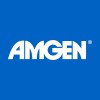
Combination Chemotherapy Followed by Bone Marrow or Peripheral Stem Cell Transplantation in Treating...
LymphomaRATIONALE: Drugs used in chemotherapy use different ways to stop cancer cells from dividing so they stop growing or die. Combining chemotherapy with peripheral stem cell or bone marrow transplantation may allow the doctor to give higher doses of chemotherapy drugs and kill more cancer cells. PURPOSE: Phase II trial to study the effectiveness of combination chemotherapy followed by autologous bone marrow transplantation or peripheral stem cell transplantation in treating patients who have non-Hodgkin's lymphoma or Hodgkin's lymphoma.

Non-Ablative Allo HSCT For Hematologic Malignancies or SAA
Chronic Myeloproliferative DisordersLeukemia6 moreRATIONALE: Drugs used in chemotherapy use different ways to stop cancer cells from dividing so they stop growing or die. Peripheral stem cell transplantation may be able to replace immune cells that were destroyed by chemotherapy used to kill cancer cells. PURPOSE: Phase II trial to study the effectiveness of combination chemotherapy followed by peripheral stem cell transplantation in treating patients who have hematologic cancer or aplastic anemia.

Ganciclovir Plus Arginine Butyrate in Treating Patients With Cancer or Lymphoproliferative Disorders...
LeukemiaLymphoma2 moreRATIONALE: The Epstein Barr virus can cause cancer and lymphoproliferative disorders. Ganciclovir is an antiviral drug that acts against the Epstein Barr virus. Arginine butyrate may make virus cells more sensitive to ganciclovir. Combining ganciclovir and arginine butyrate may kill more Epstein Barr virus cells and tumor cells. PURPOSE: Phase I trial to study the effectiveness of arginine butyrate plus ganciclovir in treating patients who have cancer or lymphoproliferative disorders that are associated with the Epstein Barr virus.

Depsipeptide to Treat Patients With Cutaneous T-Cell Lymphoma and Peripheral T-Cell Lymphoma
Cutaneous T Cell LymphomaPeripheral T Cell LymphomaBackground: NSC630176 is a depsipeptide fermentation product from Chromobacterium violaceum with potent cytotoxic activity against human tumor cell lines and in vivo efficacy against both human tumor xenografts and murine tumors (1-3). NSC 630176, herein referred to as depsipeptide, shows a lack of cross resistance with several commonly used cytotoxic agents such as vincristine, 5-fluorouracil, mitomycin C and cyclophosphamide (2). However, it has been defined as a P-glycoprotein (Pgp) substrate by COMPARE analysis of the National Cancer Institute (NCI) drug screen cytotoxicity profile (4). Depsipeptide is a member of a novel class of antineoplastic agents, the histone deacetylase inhibitors. In the phase I trial conducted at the National Cancer Institute (NCI), responses were observed at the maximum tolerated dose (MTD) in patients with cutaneous and peripheral T-cell lymphoma. Objectives: In patients with cutaneous T-cell lymphoma, the primary end points to be examined are overall response rate, complete response rate and duration of response. In patients with relapsed peripheral T-cell lymphoma, the endpoints to be examined are overall response rate and complete response rate. To evaluate the tolerability of depsipeptide with extended cycles of therapy. Eligibility: Patients with cutaneous T-cell lymphoma (mycosis fungoides or Sezary syndrome) or other peripheral T-cell lymphomas are eligible. Design: Depsipeptide will be administered at 14 mg/m^2, over 4 hours on days 1, 8 and 15. This trial will accrue in six cohorts; Arm 1, patients with cutaneous T-cell lymphoma who have had less than or equal to two prior cytotoxic chemotherapy regimens; Arm 2, patients with peripheral T-cell lymphoma who have had less than or equal to two prior cytotoxic chemotherapy regimens; Arm 3, patients with cutaneous and peripheral T-cell lymphoma who have had more than two prior cytotoxic chemotherapy regimens; Arm 4, patients with other mature T-cell lymphomas; Arm 5, a replicate arm of arm 1; Arm 6, patients with peripheral T-cell lymphoma who have had more than two prior cytotoxic chemotherapy regimens; Arm 7, patients with cutaneous T cell lymphoma who have received vorinostat. Dose may be adjusted based on toxicities.

Rituximab Plus Interleukin-2 in Treating Patients With Hematologic Cancer
B-cell Adult Acute Lymphoblastic LeukemiaExtranodal Marginal Zone B-cell Lymphoma of Mucosa-associated Lymphoid Tissue51 moreMonoclonal antibodies such as rituximab can locate cancer cells and either kill them or deliver cancer-killing substances to them without harming normal cells. Interleukin-2 may stimulate a person's white blood cells to kill cancer cells. Combining rituximab with interleukin-2 may kill more cancer cells. Phase I trial to study the effectiveness of rituximab plus interleukin-2 in treating patients who have hematologic cancer.

Combination Chemotherapy in Treating Patients With Relapsed or Refractory Intermediate-Grade or...
LymphomaRATIONALE: Drugs used in chemotherapy use different ways to stop tumor cells from dividing so they stop growing or die. Combining more than one drug may kill more tumor cells. PURPOSE: Phase II trial to study the effectiveness of combining doxorubicin and topotecan in treating patients who have relapsed or refractory intermediate-grade or high-grade non-Hodgkin's lymphoma.

ACVBP Followed by ASCT in Patients With BCL-2 Positive Diffuse Large B-Cell Lymphoma
LymphomaLarge-Cell1 moreThe primary objective of the study is to evaluate the efficacy of ASCT as consolidation in case of bcl-2 overexpression in non previously treated patients aged 60 years or less with low-intermediate risk diffuse large B-cell lymphoma who responded to ACVBP regimen. Our goal is to obtain a 15% increase of event-free survival at 2 years.

Pegfilgrastim Administered on the Same Day as Chemotherapy in Non-Hodgkin's Lymphoma
Non-Hodgkin's LymphomaThe purpose of this study is to provide data on the safety and efficacy of pegfilgrastim when administered on the same day versus the next day of chemotherapy, as measured by the duration of grade 4 neutropenia.

Molecular Risk Assessment in Planning Treatment for Patients With Non-Hodgkin's Lymphoma
LymphomaRATIONALE: Analyzing genes that are present in cancer cells may be useful as a method for predicting the response of non-Hodgkin's lymphoma to cancer treatment. Imaging procedures such as positron emission tomography (PET) scans may improve the ability to measure how well cancer has responded to treatment. PURPOSE: This phase II trial is studying molecular risk assessment to see how well it works in predicting response to therapy in patients who are receiving treatment for non-Hodgkin's lymphoma.

Bone Marrow Transplantation With Specially Treated Bone Marrow in Treating Patients With Hematologic...
Graft Versus Host DiseaseLeukemia3 moreRATIONALE: Bone marrow transplantation may be able to replace immune cells that were destroyed by chemotherapy or radiation therapy used to kill tumor cells. Sometimes the transplanted cells can make an immune response against the body's normal tissues. Treatment of the donor bone marrow with the patient's white blood cells and a monoclonal antibody may prevent this from happening. PURPOSE: Phase I trial to study the effectiveness of bone marrow transplantation with specially treated bone marrow in treating patients who have hematologic cancer that has not responded to previous therapy.
